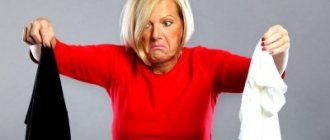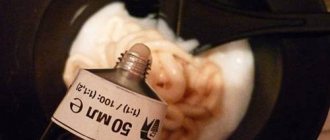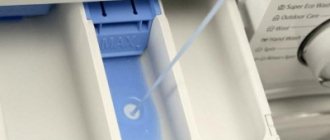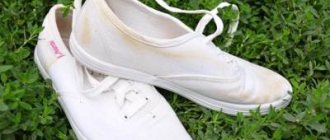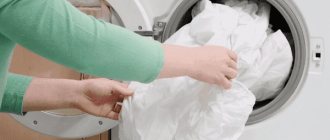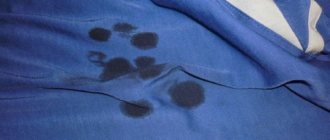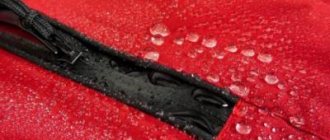Vinegar is one of the few products that is used in the household for various purposes. Very often used for washing. Despite the fact that it is an acid, it does not damage the fabric and does not cause allergies. Therefore, it is recommended to add vinegar to wash clothes in the washing machine. With the correct dosage, the product is useful for things and also prevents the formation of scale.
Table vinegar is used when washing
Use for washing machine
Vinegar is considered an aggressive agent. In fact, washing powders and bleaches are more harmful. It has a soft effect on fabrics, so it is used even for delicate fabrics. And most importantly, washing with vinegar in an automatic washing machine protects against the formation of scale and limescale, destroys bacteria and mold.
Author's note
Kirilova Olga
It is recommended to run the machine once a month without laundry, adding 2-3 glasses of vinegar to the powder compartment.
It turns out that this remedy is even useful, the main thing is to know how much to add for the best effect. It softens water, removes limescale, cleans the internal surfaces of the machine, and eliminates unpleasant odors. Items washed with it are safe for children and allergy sufferers. The only thing that bothers me is the unpleasant smell, but it quickly disappears. Cleaning a washing machine with vinegar is a gentle and universal remedy for maintaining the functionality of the device.
By adding vinegar when washing, you protect your machine from scale.
Important Tips
Tips to help you wash things better and disinfect your washing machine:
From time to time you need to run the washing machine with vinegar without any clothes. Idle washing will prevent the formation of limescale.- You need to wash with acid on a delicate cycle. The optimal water temperature is 60 degrees.
- Vinegar is suitable for caring for any item, regardless of the type of fabric from which it is made.
- Hand washing with vinegar should be done with gloves.
You can wipe the drum rubber with an acidic solution after each wash. This will prevent the appearance of mold and destroy harmful bacteria. Particular attention is paid to the bottom of the gasket.
You will find maximum useful information about washing clothes and various fabric products here.
Why is it useful to add when washing?
Not everyone knows why vinegar is added when washing. Housewives believe that they can only wash their clothes with modern washing powder. But the preservative has long been used in households. Used for children's clothes, bed linen, towels, delicate clothes. The reason for its popularity is considered to be its numerous beneficial properties.
- If added along with washing powder when washing colored items, it refreshes the colors and eliminates the appearance of white streaks.
- Using it instead of conditioner when rinsing makes the laundry softer and eliminates static electricity.
- Removes powder deposits that lead to allergies.
- Acts as a bleach and removes yellow stains on white things.
- Removes stains from wine, coffee or jam. Removes worn collars and deodorant marks.
- Neutralizes the aromas of perfume, tobacco, sweat, urine. Eliminates musty smell and mold.
- Protects clothes from staining when washing bright fabrics.
Do you add vinegar to the machine?
Not really
Vinegar is a universal remedy; using it when washing, you will refuse aggressive chemicals.
The preservative is also used for other purposes. For example, see how to clean a microwave with vinegar.
Useful video:
Regular table vinegar: properties
This product has been known to mankind since ancient times. It was used not only in cooking, but also in farming, medicine, and cosmetology. Such a wide range of applications is explained by the special properties of the liquid.
There are two types of vinegar - natural and synthetic. The first is obtained by fermenting alcoholic yeast. It contains many useful substances. This type is used in cooking, medicine and cosmetology. Liquid obtained artificially is more often used for economic purposes. You can also use acetic acid instead.
However, it should be remembered: acid is an aggressive substance, when working with which special care must be taken.
Synthetic vinegar has a number of properties that make it very valuable for all housewives:
- Whitening. Due to its acid content, this substance returns things to their original whiteness, effectively eliminating yellowness and gray tints. With this product you can bleach even delicate fabrics.
- Neutralizing odors. This product copes well with persistent odors, for example, after fish, garlic, onions, and is therefore recommended for washing kitchen towels.
- Antiseptic. Vinegar perfectly disinfects surfaces, destroying colonies of pathogenic bacteria.
- Emollient. Because the product is acidic, it effectively softens hard water, which helps soften fabrics washed in it.
- Antifungal. The product destroys fungal spores, so it is recommended to use it for cleaning bed linen and other home textiles.
Baking soda and vinegar are the easiest ways to clean your home.
Vinegar is often added to window cleaning water to give glass a sparkling shine. It effectively removes limescale in a kettle and copes well with it in a washing machine, so the answer to the question of whether vinegar can be added when washing is in the affirmative: it will take care of machine parts no worse than the advertised Calgon. Moreover, it will protect the silicone parts of the machine from mold.
How to wash
Use regular white 9% vinegar, but replace it with natural apple cider vinegar. Use separately or together with washing powder. The laundry is pre-soaked in it. Add to washing machine. You will need a whole glass or half. To refresh the color of an item, wash new clothes, remove odors or remove static electricity, 100 ml of the product is enough. If you need radical action, add 200 ml.
Author's note
Kirilova Olga
To wash thick, large items, it is recommended to add a tablespoon of soda along with vinegar.
Its effect depends on where vinegar is poured into the washing machine. Add to the powder compartment to remove stains, remove odors, whiten or clean your machine. If the product is used for rinsing, pour it into the conditioner compartment. Sometimes used for pre-soaking. This will prevent things from staining and keep the color vibrant.
It is recommended to periodically add 50-100 ml of vinegar to the machine along with the powder. It will prevent the formation of scale and unpleasant odors, destroy bacteria, and soften laundry. And most importantly, it does not leave streaks and prevents the formation of soap deposits on things. Vinegar and baking soda will clean the oven in a short period of time.
People who are allergic to detergents especially like this product.
How to properly make and use fabric softener with vinegar with your own hands
Nothing could be simpler. It is enough to add your favorite essential oil to vinegar at the rate of 5 drops per 1 liter of 9% vinegar. You can immediately prepare several liters of this solution, as it can be stored for quite a long time.
A recipe with the addition of soda is also effective. To do this, take 400 ml of hot water, 200 ml of 9% table vinegar, 100 g of soda, a few drops of essential oil (optional). In a container with high edges, mix water with vinegar and add baking soda in parts, stir until completely dissolved, add oil. Pour fabric softener into a plastic bottle, cap tightly and use within a week.
To wash colored items, add approximately 100-150 ml of conditioner with vinegar, and when washing white clothes, the dose can be increased to 250 ml.
Use as a conditioner
Housewives use conditioners for rinsing to give the laundry softness and a pleasant smell. But such means have appeared recently, and previously vinegar was used for this purpose. Moreover, already washed laundry was rinsed, but it is better to pour it into the conditioner compartment and run the normal program. This will require 100-200 ml of product.
Rinsing clothes with vinegar in the washing machine makes them fresh and soft. After this, the clothes are not electrified. Some people don’t like the smell that remains on things, but it disappears during drying.
It is recommended to rinse new laundry in this manner. This eliminates factory impregnation, dust and bacteria, and prevents the formation of static electricity. Things are also treated against infections and parasites. Pour 2 glasses into the conditioner compartment and start the “Rinse” program.
Things become soft after using a preservative
When is it better not to use vinegar in the machine?
Of the rules for washing with vinegar in an automatic machine, you need to remember the main thing: never and under no circumstances should it be mixed with chlorine bleaches!
Products containing chlorine have disinfectant and bleaching properties. It may be tempting to combine these qualities with vinegar’s excellent ability to remove even old stains and eliminate unpleasant odors to achieve greater effect. Nothing good will come from this desire.
Thus, the main ingredient of any liquid or powdered chlorine bleach, when mixed with acid, begins to actively release chlorine gas - an extremely toxic substance that causes severe poisoning.
The reaction can even occur when the fabric is treated with vinegar before washing (for example, soaking), and then half a cup of bleach is added to the machine compartment. In such cases, it is quite possible to inhale toxic fumes when removing the laundry after the process is completed. Needless to say, clothes after such “treatment” will have to be washed, at a minimum.
How to bleach laundry
Add a preservative when washing light-colored items to remove stains. The ratio of the amount to powder depends on the area of contamination and the age of the stain. It is recommended to pour a glass of product into the powder compartment. You can refresh white towels and tablecloths by adding a tablespoon of baking soda along with the preservative.
Often light-colored items turn yellow over time. Acetic acid restores color. It is recommended to add directly to the washing machine drum. Even if completely filled, this product returns the whiteness of the fabric.
The interaction of vinegar with soda
The two substances are diluted in a 1:1 ratio. This solution is effective in cases where the machine has a lot of scale and there is a pronounced unpleasant odor coming from the drum. Next you need:
- The mixture is added to the loading hopper;
- The longest washing mode is set;
- The highest temperature is selected;
- The washing machine turns on without any laundry in the rinse mode. During operation, the “insides” of the machine are cleaned of acid and scale.
After this, you need to carefully remove the drain filter and rinse it thoroughly to remove any remaining dirt. Next, the drum, machine hatch glass and rubber band are wiped several times with a microfiber cloth.
It is recommended to wipe the rubber with the same solution weekly to prevent the appearance of fungus and mold. You can carefully remove the cuff and wipe the body. It is known that most dirt accumulates in the lower part of the rubber, so you need to rub the bottom especially carefully. In case of heavy contamination, you can repeat this procedure several times.
If it is difficult to get to distant areas of the rubber cuff, you can clean them with a toothbrush soaked in the solution. When cleaning is finished, wipe all parts dry with a soft cloth. You can use this cleaning method quite often, since baking soda and vinegar do not have a harmful effect on metal and plastic. Ideally, it is recommended to carry out treatment at the end of each washing machine cycle.
In order for washing to be effective, it is definitely worth using vinegar. However, if this substance is not at hand, it can be successfully replaced with citric acid. Perhaps the effect will not be so noticeable in appearance, but the acid will successfully kill all microbes and corrode the rust on the metal parts of the machine. Each housewife decides for herself which substance to choose.
How to remove stains
The preservative effectively removes stains from clothes. Suitable for children's things that get very dirty. By adding a glass of vinegar to the machine along with the powder, you will not only get rid of stains, but also disinfect the laundry. For better cleaning, pre-moisten the stain with undiluted product, and then place it in the machine without washing. Also, find out how vinegar helps against scale in a kettle.
Difficult old stains can be removed with vinegar in combination with baking soda. Mix a glass of acid and a tablespoon of powder. This composition copes with stains of blood, fruit, wine, and fat. Use instead of powder or apply to dirt and rub a little with a soft brush. Then wash as usual.
Advantages
On the Internet you can find many positive reviews about using vinegar to disinfect laundry in an automatic washing machine. Vinegar for washing clothes greatly simplifies the work of a housewife because:
- Actively fights old, stubborn and difficult to remove stains;
- Reduces water hardness by dissolving calcium and magnesium salts contained in it;
- Removes scale from the washing machine;
- Fights static electricity. Clothes made of silk and other highly electrifying fabrics, washed with vinegar, do not stick to the body and do not generate current discharges.
This substance also successfully whitens clothes without deforming their structure, so it can be used for washing items that require a delicate approach.
Handwash
For delicate fabrics or cleaning difficult old stains, the preservative is used for hand washing. Heavily fading bright clothes should not be put in the machine at first; they are washed in the following solution: 2 tablespoons of powder per 4 liters of water, 3 tablespoons of vinegar. And if you want to bleach old kitchen towels, fill them with water and a glass of product in an enamel basin, bring to a boil and leave for 12 hours.
Have you tried hand washing with vinegar?
Not really
When washing a swimsuit, add half a glass of vinegar to 5 liters of warm water. Soak the item for 15 minutes, then rinse. After this, the swimsuit will not lose color and shape. This product is suitable for removing stains from leather items. Dilute it in half with linseed oil, apply to the dirt. After 15 minutes, all that remains is to wipe the item with a soft cloth.
Washing with vinegar will help get rid of stains
What cannot be used for
Acetic acid is quite aggressive, so it is definitely not suitable for delicate fabrics . Silk, leather, satin, velvet and chiffon will turn into useless rags if you accidentally wash them with vinegar.
It's amazing that one product has so many beneficial properties. And that's not counting its value in cleaning. I took the washing powder for myself, and instead brought several bottles of table vinegar. I also grabbed some for myself, now I’ll follow my grandmother’s advice. Did you know about such versatility of the product ?
Previous article Next article
Remember
- Add vinegar along with the washing powder - this will help remove stains, yellowness and unpleasant odors.
- Use it instead of conditioner - it does not cause allergies and makes things softer.
- To remove difficult stains and to whiten, soak the item in the solution.
- Periodically run the bite machine without any items - this will help prevent the formation of limescale.
Video about the properties of a preservative during washing:
Tell us in the comments about your own experience of using a preservative at home. Which method did you like best and what would you like to see in the sleep service next time?
Vinegar instead of powder: disadvantages
The main disadvantage of this substance is the smell. It is quite caustic, especially noticeable when heated, so those who decide to boil their laundry in vinegar water should keep in mind that the apartment will quickly be filled with a not very pleasant aroma. There is an opinion that amber dissipates very quickly, but in fact it can last up to several hours in a row.
Before washing things with vinegar, you should check the fabric's reaction to it. If the item is colored, you need to take a piece of identical material (usually it is sewn to the product label) and test the effect of the home remedy on it. If the sample does not fade or acquire a specific aroma, you can wash the entire product with an acidic liquid.
In most cases, vinegar does not cause skin allergies, but it can irritate the respiratory system, so the product should be used with caution by asthmatics and people who have had some kind of respiratory disease.
For those for whom vinegar solutions do not cause health problems, this product can and should be used as a faithful household assistant. Moreover, you can buy it at any grocery store.
Website www.sympaty.net – Beautiful and Successful. Author: Elena Burenyuk. More information about the site's authors
Prevention
It is always easier to prevent a problem than to fix it. To ensure that your machine serves you for a long time and without failure, we suggest that you adhere to the following recommendations.
- Use powder, conditioner, bleach in the required quantity specified in the instructions. Excess detergents settle on the parts of the washing machine.
- After each wash, wipe the rubber o-ring, drum, and hatch door glass dry.
- Rinse the detergent tray and wipe the recess into which it is inserted.
- Before placing laundry in the drum, remove any excess items from the pockets.
- Do not store dirty laundry or washed laundry in the machine. take it out immediately.
- Clean the drain hose filter regularly and replace it as necessary.
- At least once a month, wash your clothes at maximum temperature.
- Avoid using low quality powders.
- For natural ventilation and evaporation of excess moisture, always keep the hatch door ajar.
- At least once every 6 months (more often with very hard water) you need to clean the washing machine with vinegar.
By following these simple tips, you will not encounter any unpleasant consequences for your machine.
Removing soap residue from clothes
The acid in white vinegar breaks down any soap residue that has penetrated deep into the fibers of the fabric. You can easily get rid of detergent residue when washing towels, duvet covers and even blankets. Soap accumulations could have formed in these products over a long period of time.
If not removed, they can cause irritation to sensitive skin, especially in newborns and young children. To remove soap deposits, add one cup of white vinegar to the full rinse cycle. If such accumulations have not been removed for a long time, double the proportion of vinegar. Washing makes the pile of towels harder. In this case, you will kill two birds with one stone: you will remove soap residue from the products and return the old towels to their former softness.
The 22-year-old student graduated from college with her grandmother. Both with honors
Took 3rd place in popularity: Manizhi’s video has already received more than a million views
Suitable for everyone: 4 myths about black clothing that are imposed on women
Retains color
How familiar is that unpleasant feeling when your favorite white T-shirt gradually acquires a yellowish tint or slowly but surely turns gray! It turns out that dilute acid can gently bleach without damaging the fiber structure. In addition, it preserves other colors, allowing you to enjoy the original look of your clothes for a very long time without spending a lot of money on expensive chemicals.
If you use too much powder, a soap scum will form on things, which we can also get rid of with this simple method!
We bleach things from various stains
White clothes, bedding and underwear require additional care, which is why every housewife must know how to bleach this or that item.
How to bleach faded white clothes?
“How to bleach white clothes that have been dyed during washing?” – this is the question many inexperienced or inattentive housewives ask. You can purchase special laundry detergents for these purposes, but remember, the sooner you start bleaching faded items, the greater the likelihood of your success in this matter.
Folk remedies are proven methods in this difficult matter:
- Immediately after you discover that white items have faded, wash them thoroughly with laundry soap.
- If the fabrics of faded items are thick enough, you can use white.
- If you have oxygen bleach in your closet (this is the easiest way to bleach faded clothes), then your whites will return to their original color within a few minutes of washing with it.
How to bleach yellowed white clothes?
White things, unfortunately, turn yellow over time, and some housewives believe that the time for such things has expired and it’s time to dispose of them. In fact, there are several effective ways to restore the snow-whiteness of your things:
- An integrated approach - mix salt and regular washing powder:
- You will need several glasses of laundry detergent with a few spoons of persol
- add this mixture to water
- put on fire
- throw the laundry in there
- boil things thoroughly
- Washing powder with potassium permanganate is an excellent option for whitening things:
- you will need 5 liters of water
- you need to add a little potassium permanganate to it (such an amount that the water is slightly pink) and powder - 100 g
- beat the foam on the resulting solution
- place yellowed laundry there
- boil
- do not remove things from there until the water becomes completely cold
How to bleach sweat from white clothes?
This problem affects anyone and everyone who likes to wear white things. So, let's talk about how to whiten armpits on white things :
- If the item is made of thick fabric, sprinkle kitchen salt on the yellow stains and pour in alcohol. Leave it in this state for a while, then wash the item.
- If the sweat stains are fresh, then laundry soap will help whiten them. Lather the yellow areas well and leave for half an hour, then rub these areas well and wash the item as usual.
- Mix 200 ml of ammonia, 200 ml of denatured alcohol, add 800 ml of water and wash things with yellow stains in this solution.
If you wash white items more often, then yellow stains will not have time to eat into the fabric.
How to bleach white woolen items?
Items made from such fabrics are considered quite delicate, so the approach to bleaching them should be similar:
- Hydrogen peroxide - add a little of this when machine washing.
- Bleach (special for woolen fabrics).
- Soda - soak clothes in a soda solution, then wash.
- A safe way is chalk, but you will need a large amount of it. To wash one large woolen item you need at least half a kilogram. Add the required amount to water, soak the item for half an hour, then wash it thoroughly. Everything is quite simple and fast.
If you are wondering how to bleach white synthetic items, check out all the methods above, they will work great for this type of fabric.
Whichever of the presented methods you choose, the main thing is that you take into account the complexity of the stains and the density of the fabric itself from which the things are made. Bleaching cannot be called a completely simple process, but in order for things to regain their former whiteness, you will have to try.
Vinegar for mold and scale
By the way, vinegar can also extend the life of a washing machine. After all, it removes mold and scale. As a rule, it appears after washing heavily soiled items. Therefore, do not forget to perform the following steps every now and then:
- Open the powder compartment;
- Pour 200 milliliters of vinegar;
- Set the temperature to high;
- Start washing;
- Wipe the rubber band and the drum itself with vinegar;
- Start rinsing;
- Wipe the machine dry with a cloth;
- Leave to air.
Now you know that vinegar is useful for more than just cooking. Remember and use these tips.
Removing fresh bright spots
You no longer need to worry about coffee spilled on your favorite blouse. Keep undiluted white vinegar in a spray bottle for emergencies. Before washing, you can treat stains from coffee, wine, soda, chocolate and jam in this way. Allow the cloth to absorb the vinegar within 10 minutes. After this, take a soft brush and treat the stain in accordance with the product care instructions. Stubborn deodorant stains can be removed with a sponge soaked in a 100% vinegar solution.


